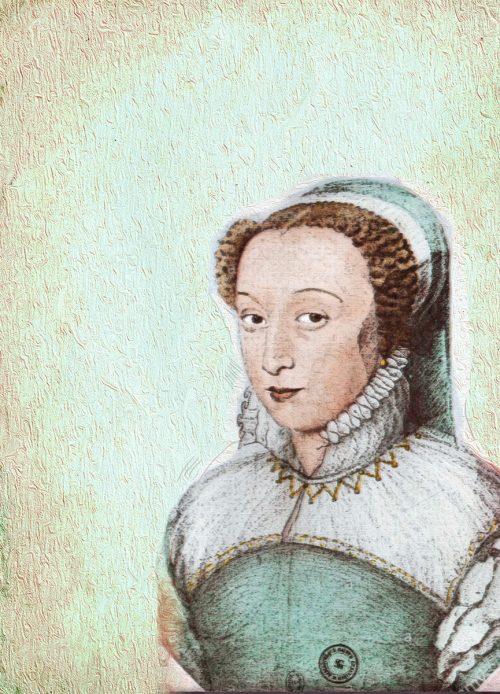The turbulent times of the 16th century were dominated by the conflict between Francis I, King of France, and the Holy Roman Emperor, Charles V, the spread of the Protestant Reformation, the divorce of Henry VIII from Catherine of Aragon in England and the menace of Turkish invasion. When Giulio de’ Medici, the illegitimate son of the assassinated Giuliano de’ Medici, became Pope Clement VII in 1523, his position proved not to be an easy one. As France and the Holy Roman Empire battled it out for domination in Europe, Clement VII seesawed from side to side in ongoing attempts to maintain his control in Italy. One of the ploys he used to shore up his papal power and, at the same time, reinforce that of the Medici family was to organize strategic marriages. In 1508, still a cardinal, he successfully brokered the wedding between the wealthy banker Filippo Strozzi the Younger and Clarice de’ Medici, the daughter of Piero di Lorenzo de’ Medici, known as Piero the Unfortunate.
Two decades later, in 1527, Clement VII arranged the marriage of his nephew Alessandro de’ Medici, duke of Florence, to the five-year old Margaret of Austria, daughter of Charles V, although the couple were not married until two years after the pope died in 1534 and a year before the groom was murdered. However, Clement VII’s matchmaking kudos reached its peak in 1533 when he arranged the marriage of Catherine de’ Medici, who was without any royal lineage, to Henry, duke of Orleans (afterwards King Henry II), the younger son of Francis I of France. In the future, this union would make Catherine one of the most powerful women in Europe and the mother of three French kings.

Affectionate towards the young Catherine, like Pope Leo X, his Medici papal predecessor, Clement VII took a special interest in the child when she was orphaned soon after she was born on April 13, 1519. Her mother Madeleine de la Tour d’Auvergne, the countess of Boulogne, died probably of puerperal fever two weeks after the birth, to be followed six days later by her father, Lorenzo de’ Medici, duke of Urbino, who is said to have died of syphilis, complicated by tuberculosis.
Rejecting calls to have the child brought up in France, Leo X placed Catherine, now proclaimed duchess of Urbino, into the care of her paternal grandmother, Alfonsina Orsini, in Rome. After Alfonsina’s death in 1520, Catherine lived in Rome and Florence with her aunt Clarice de’ Medici and her family. Once Giulio de’ Medici became Pope, anxious to exploit her potential marriage marketability, he moved her to Palazzo Medici Riccardi in Florence, where she lived like a princess.
In 1527, after the Medici were ousted from Florence for a second time, Catherine was effectively taken hostage and, after a brief period at the Medici villa in Poggio a Caiano, she was put into the “custody” of the nuns of Santa Lucia in via San Gallo before being handed over to the sisters at Santissima Annunziata delle Murate, where she lived happily for the next three years, unaware of how life-threatening her family’s enemies were to outside the convent walls.
Subsequent to the surrender of the city in August 1530 and the return of the Medicis, Catherine was reunited with Clement VII in Rome, who now dedicated himself to securing her marriage to the duke of Orleans. Although small, vivacious, intelligent and educated, Catherine was not particularly beautiful, having inherited the strong Medici features and their protruding eyes. In order to clinch the deal, as a supplement to Catherine’s inheritance from her mother, the pope promised the bride a dowry of 100,000 gold écus, 50,000 to be paid on Catherine’s arrival in Marseilles, first stop on her way to Paris, and the remainder in installments. To help finance this huge amount, the penny-pinched pope borrowed 80,000 écus from Filippo Strozzi in exchange for a gold, gem-encrusted clasp by Benvenuto Cellini, which Strozzi was forced, by another pope, to return without ever recovering his money. Clement VII also provided Catherine with furniture, carpets, ornaments and works of art, as well as magnificent jewels including enormous diamonds, rubies, emeralds and the famous pearls that Catherine would later gift to her daughter-in-law, Mary, Queen of Scots, which Elizabeth I frequently wore after her wayward cousin had been beheaded. Even Catherine’s trousseau was of the finest fabrics. The marquise of Mantua, Isabella d’Este, famous for her style and taste, sent large quantities of gold, silver and silk to Florence for its artisans to embroider and make into exquisite dresses, underwear, and black and crimson bed sheets. Brocade and damask abounded. So extravagant, in fact, was her bridal outfitting that a tax had to be imposed to help cover the costs.
On September 1, 1533, Catherine left Florence forever and sailed five days later, with a large retinue and a flotilla of ships, from La Spezia to Villefranche, where she had to wait another month for Clement VII to arrive. With the pope’s blessing, the lavish wedding between Catherine de’ Medici and Henry of Orleans took place at the Église Saint-Ferréol les Augustins in Marseille on October 28, 1533. Both the bride and groom were 14 years old.








